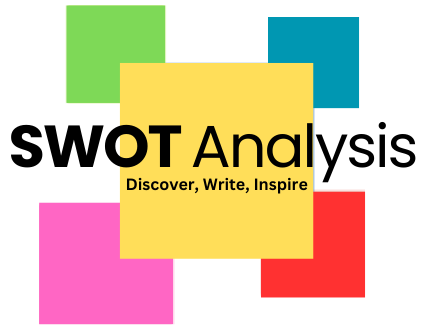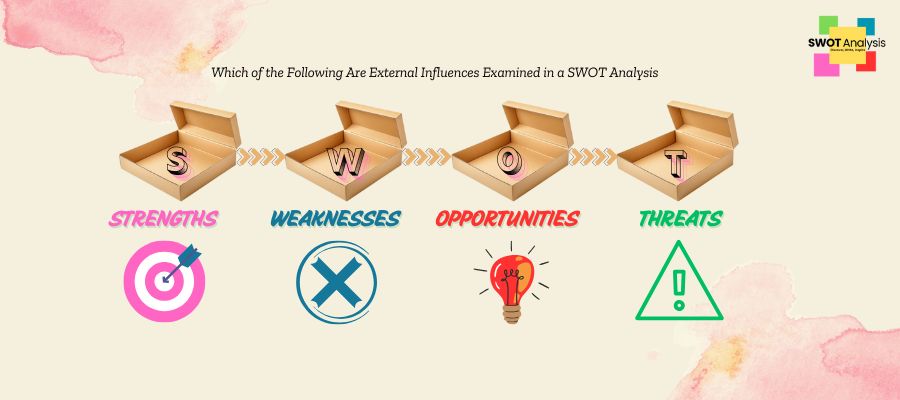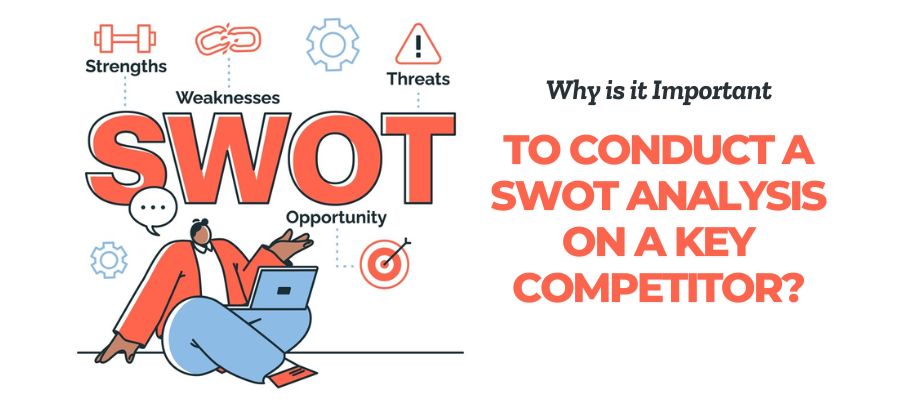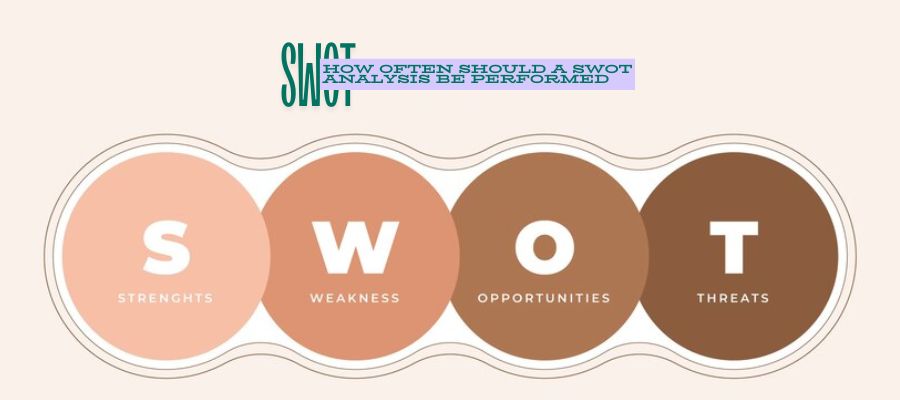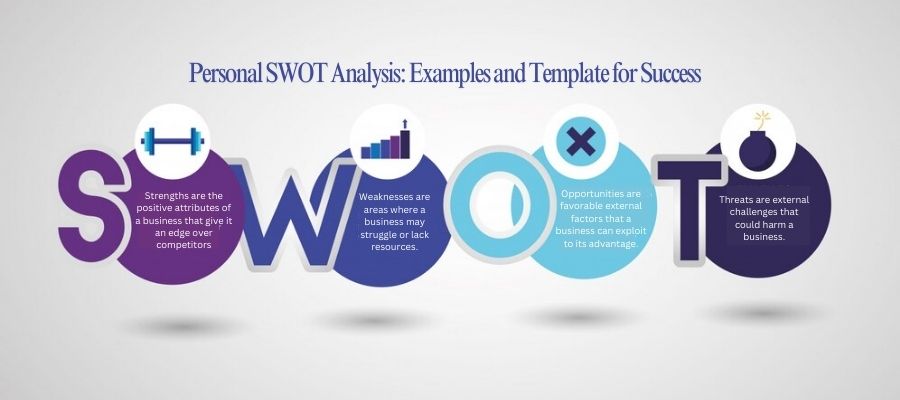SWOT analysis is a strategic planning tool used by businesses to assess their internal and external factors. It helps organizations understand their strengths and weaknesses while identifying opportunities and threats in their external environment. This comprehensive strategic approach enables businesses to develop better strategies for sustainable growth.
Table of Contents
Breakdown of the Four Components
Strengths (Internal)
Strengths are internal factors that give an organization a competitive advantage. These may include a strong brand reputation, skilled workforce, proprietary technology, or a loyal customer base.
Weaknesses (Internal)
Weaknesses are internal factors that can adversely affect a business’s success. Examples include poor financial health, outdated technology, lack of expertise, or inefficient processes. Weaknesses are internal factors that organizations must address to remain competitive.
Opportunities (External)
Opportunities refer to external opportunities and threats that can positively impact a business. These may include market trends, technological advancements, changes in consumer behavior, or favorable government policies. Organizations can take advantage of these to expand and improve operations.
Which of the Following Are External Influences Examined in a SWOT Analysis(External)
Threats are external challenges that may negatively impact an organization. Threats include increased competition, economic downturns, regulatory changes, or supply chain disruptions. Companies must develop contingency plans to address these threats and minimize their impact.
External Influences in SWOT Analysis
Explanation of External Factors and Their Impact on an Organization
External factors refer to external influences examined in a SWOT analysis. These include economic, political, social, and technological forces that affect business operations. Understanding these factors allows organizations to craft strategies that align with market demands.
Why External Influences Are Critical for Strategic Planning
External factors that impact a business are essential for making informed decisions. By identifying external influences, organizations can develop strategies that address market conditions and consumer expectations.
Opportunities: Positive External Influences
Opportunities are external factors that can help a business grow. These examples of opportunities can lead to increased revenue, market expansion, and improved brand recognition.
Examples of External Opportunities
- Market Growth or Expansion: Expanding into new markets increases revenue streams and customer reach.
- Emerging Technologies: Investing in technological advancements helps improve efficiency and customer experience.
- Changes in Regulations or Policies: New policies may create favorable business environments.
- Partnerships or Collaborations: Joint ventures can enhance capabilities and market reach.
- Shifts in Consumer Behavior or Trends: Adapting to market trends ensures relevance and customer retention.
How Organizations Can Capitalize on Opportunities
Organizations can use SWOT analysis to help identify and leverage opportunities through market research, competitive analysis, and innovative solutions.
Threats: Negative External Influences
Threats are external factors that make it difficult for a business to succeed. Threats in a SWOT analysis require proactive strategies to minimize their impact.
Examples of External Threats
- Economic Downturns or Recessions: Financial instability can affect consumer spending.
- Increased Competition: Competitors with similar products may reduce market share.
- Regulatory Changes or Legal Challenges: New laws may impose additional costs or restrictions.
- Technological Disruptions: Innovations may render existing business models obsolete.
- Natural Disasters or Global Crises: Unforeseen events can disrupt supply chains and operations.
How Organizations Can Mitigate Threats
By conducting a SWOT analysis, businesses can create contingency plans to address threats. Strategies include market diversification, risk assessment, and proactive planning.
Key Differences Between Opportunities and Threats
| Factor | Opportunities | Threats |
|---|---|---|
| Nature | Positive | Negative |
| Impact | Helps growth | Hinders success |
| Examples | Market expansion, new technologies | Increased competition, economic decline |
| Business Strategy | Exploitation | Mitigation |
Real-World Examples of External Influences in SWOT Analysis
Example 1: A Tech Company Adapting to New Regulations
A leading tech company faced strict data protection laws. By using a SWOT analysis, they enhanced cybersecurity measures, ensuring compliance and customer trust.
Example 2: A Retail Brand Responding to Changing Consumer Trends
A retail company noticed a shift toward sustainable products. They adapted by launching eco-friendly product lines, leveraging external opportunities.
Example 3: A Manufacturing Company Addressing Supply Chain Disruptions
A manufacturer experienced supply shortages due to global crises. By diversifying suppliers, they mitigated risks and maintained production.
How to Identify External Influences for Your SWOT Analysis
Steps to Analyze External Factors
- Conduct Market Research: Identify market trends and customer needs.
- Monitor Industry Trends: Stay updated on business environment changes.
- Analyze Competitors: Evaluate competitor strategies and weaknesses.
- Stay Updated on Global and Economic Changes: Watch for economic downturns and policy shifts.
Tools and Frameworks to Use
- PESTLE Analysis: Examines Political, Economic, Social, Technological, Legal, and Environmental factors.
- SWOT Analysis Template: A structured approach to assessing internal and external factors.
Also Read: The SWOT Analysis Helps Firms Identify Competitive Threats and Market Opportunities
Conclusion
A successful SWOT analysis considers opportunities and threats to develop proactive strategies. By using a SWOT, businesses can navigate external challenges and leverage growth potential.
FAQs
1. What Are the External Influences in SWOT Analysis?
External influences include market conditions, technological shifts, regulations, and economic trends that affect business decisions.
2. Which of the Following Are External Factors of a SWOT Analysis?
Opportunities and threats are external factors. They shape a company’s ability to grow or face risks.
3. What Are the External Threats in SWOT Analysis?
External threats include competition, legal changes, financial downturns, and global crises that may negatively impact business operations.
4. Can You Compare SWOT Analysis with Other Business Frameworks Used in Competitive Strategies?
Yes, SWOT is an acronym for a strategic tool that differs from PESTLE analysis and Porter’s Five Forces, which focus on external market conditions.
5. How Do You Identify Opportunities and Threats?
To identify external factors, businesses must conduct a SWOT analysis, use market research, and monitor industry trends to adapt effectively.
